This is part two of my quest for determining the best medium for primary portraits. Last week my first grade students created beautiful oil pastel portraits. I love oil pastels as they are super easy for prep and clean-up but on the downside, they require a great deal of patience. Little ones don’t often have the stamina to color over all the white paper. Today I switched gears and brought out the messy stuff: chalk pastel!
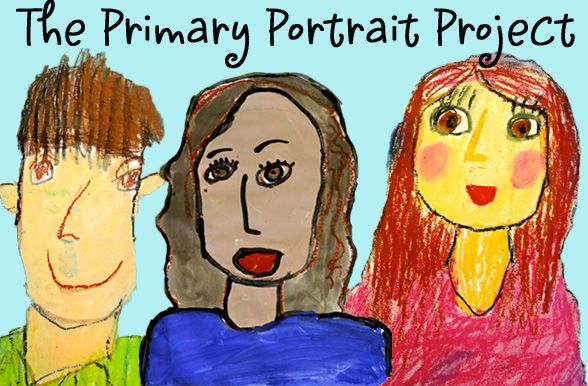
I know what you’re thinking. Never used chalk on portraits before? Well, it’s true. In eight years of teaching art, I have never used chalk pastel for portraits. No more! I loved using chalk for portraits and more importantly, so did the kids! One lady commented in the last post that she uses charcoal for portraits. After using chalk, I can see how charcoal would be equally as fabulous.
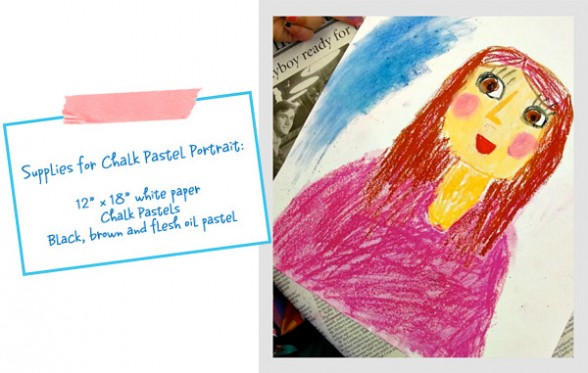
My guidelines:
- Two 40-minute class sessions
- 3 first grade class
- 3 different media experiments: chalk pastel, oil pastel, tempera paint
My Goals
- To determine the most successful portrait project for little ones.
My definition of successful
- Accessible to all abilities, including special needs
- Engaged children
- Proud and empowered children
- No crumpled-up paper and unhappy faces
- A portrait that captures the child’s essence
On day one, children drew their faces using the letter “U” technique. We used skin colored oil pastel. My thought was that I wanted these facial lines to be permanent and not disappear with accidental rubbing. In many ways, using a light colored chalk might have been better as children would be able to erase unwanted lines by smearing them away. But that was not my thinking when I began.
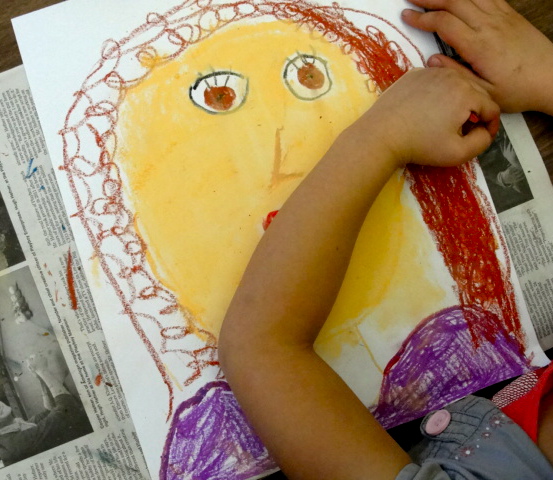
After all the facial feature lines were drawn, the children added hair and clothes. We kept the background plain. Before I was able to set out the chalk, some kids colored in their hair with the flesh colored oil pastels. I didn’t bother to correct them.
Then the fun started. Using flesh colored chalk, the children colored, then using their one finger, smoothed the chalk around to the edges of the oil pastel. This medium is perfect for blending and quite honestly, I didn’t expect the children to be so interested in this. Was I wrong! They loved creating rosey cheeks and highlights in their hair.
To bring the whole piece together, the children used oil pastel and traced over all of the original oil pastel lines.
Aren’t they wonderful? And the best part? Almost everyone finished in the allotted time.
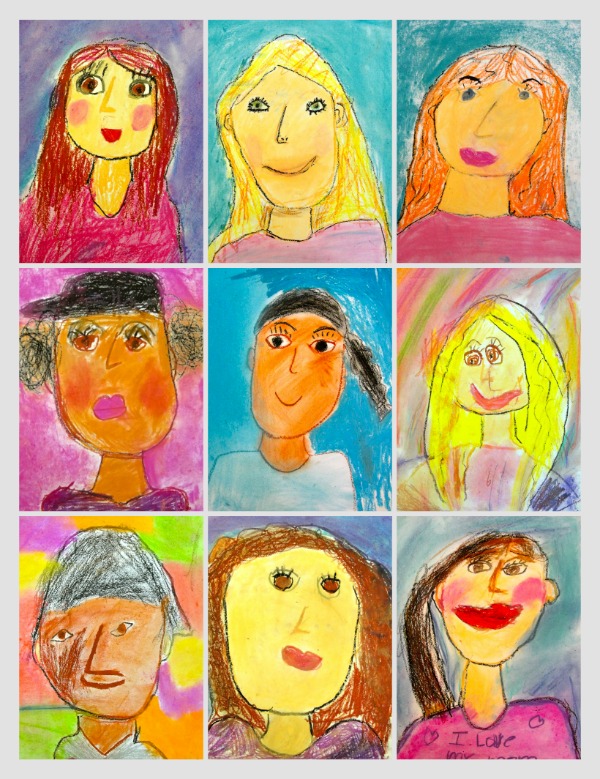
This was one of my very favorite portraits projects and one in which I plan to do with my older grades.
What do you think?
![]()
Want a free handout? Download by clicking the yellow button below and we’ll send you a free lesson guide on K-6 portrait making!

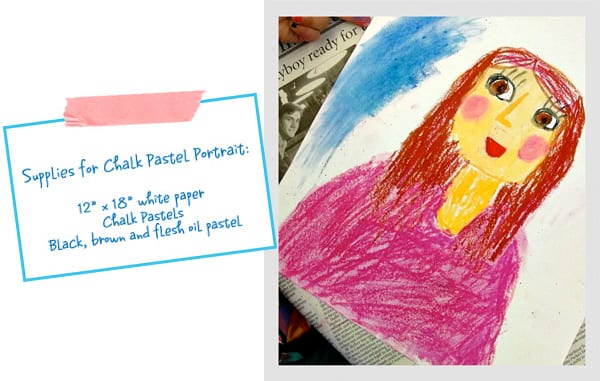











I never would have used chalk pastels for a portrait project with elementary students….. until now! They are fab and have a beautiful softness to them! The cheeks are adorable.
The one media I will probably never use again for portraits is markers. I inherited multicultural markers from the previous art teacher and decided to try them with Kinder self portraits. I don’t know what it is about markers that make my kids want to scribble… I eventually let them add crayons if they wanted to. They turned out ok. I’m glad you are doing a comparison like this!
Also, I notice that you often use 12×18 inch paper. What kind of system do you use for storing in-progress artwork? At one of my schools I don’t have room to use paper that size so we stick to 8×10 or 9×12.
I’m with you about the markers…the projects never really turn out! It’s been my experience that you need really broad tipped markers in order for the colors to lay down nicely.
As for my paper, it’s the standard paper our school orders and fits into my “Portfolio’s” nicely (folded 24″ x 36″). I store the portfolios in several large filing cabinets. Works okay. I’m starting to use smaller paper sizes like the 9 x 12. There are many great advantages to a small paper size including finishing faster! Thanks for commenting Katie.
These would make a great start on a book! Certainly frameable. Please tell your class that they made me smile.
Do you ever spray fixative on chalk projects? I used to spray this, but to many times, it came out of the bottle in “splatters” and ruined some art. So I went to simply covering the artwork with wax paper (same kind you would use for food). I attached the wax paper by folding over the top of the wax paper to the top edge of the artwork. This helped students get the idea to not smudge their artwork once they are done.
Love, love, love this. I am not an art teacher but will be doing art projects with my French K-2 class. I plan on starting the year with a self portrait and your comparison has given me valuable information. Since I am not an art teacher, I don’t imagine I’ll get the same results, but reading your post and seeing the portraits sure does make me want to try!
Thank you for this. I had to give a sample lesson for a school I was applying for. They called me last minute saying I needed to bring my own supplies, so after a glance around my studio, pastels were the most portable thing to bring. I found this lesson and taught it in my sample and was offered the job!
Thank you!!!
With the covid19 shutting down schools, I have been doing Zoom arts and crafts with my first grade nephew. Today we will try the self portrait. I’m excited about doing this with him. If it goes well I can see this developing into portraits of his family including pets.
Thanks for the wonderful inspiration!